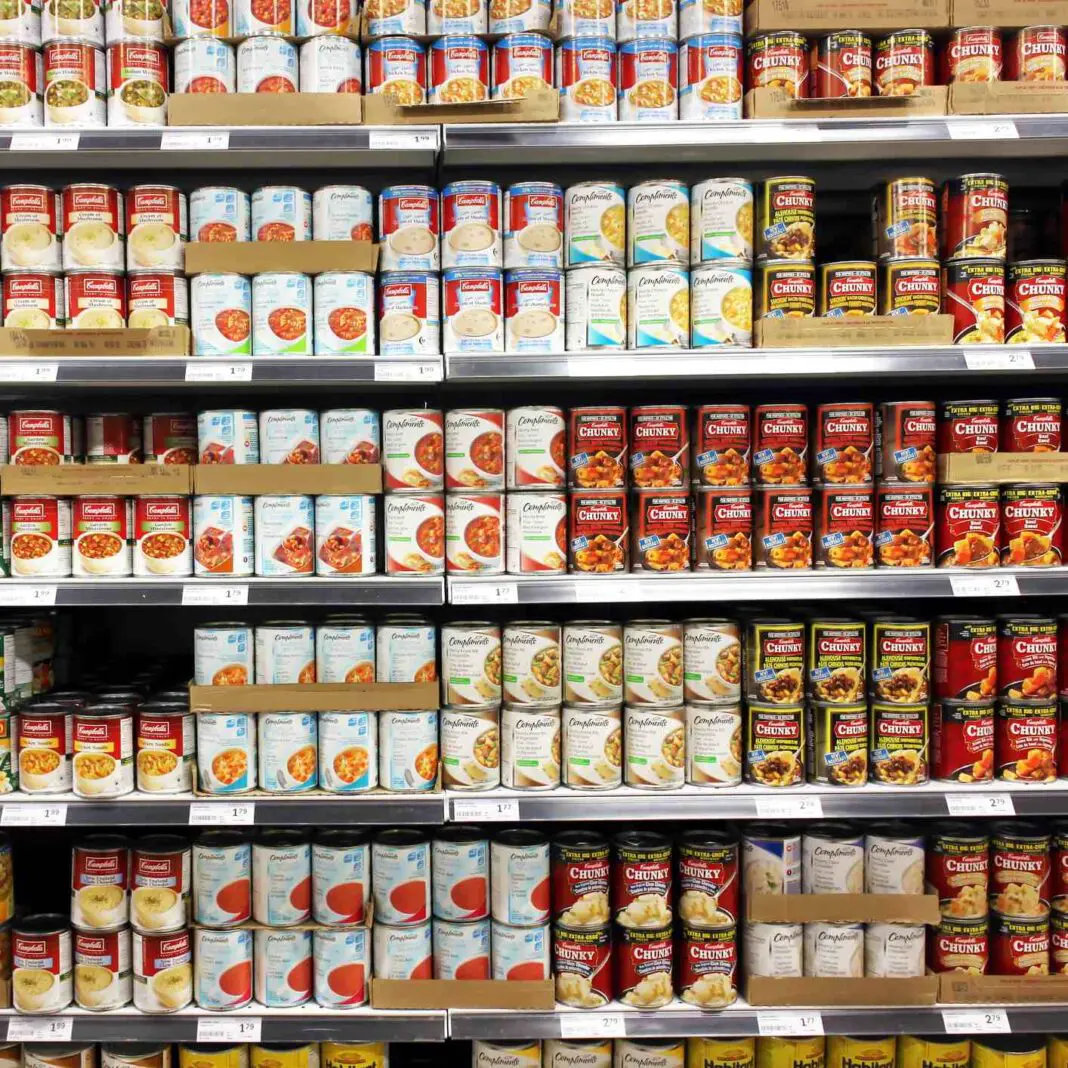Remember walking down supermarket aisles lined with familiar canned foods that somehow vanished without fanfare? The landscape of preserved foods has changed dramatically over the decades, with many beloved products silently fading into history. From century-old soups to short-lived novelties, these discontinued canned foods tell a fascinating story of changing American tastes.
The end of an era for classic Campbell’s products
After more than a century of warming hearts and homes, Campbell’s Pepper Pot soup disappeared from shelves in 2010. This thick, spicy Caribbean-inspired soup had been a staple since 1899, particularly beloved in Philadelphia. In 2023, another Campbell’s favorite met its end when SpaghettiOs with Franks quietly ceased production.
The Franco-American brand, once synonymous with convenient pasta meals, saw its final days in 2004. Their macaroni and cheese became a relic of the past as fresh and frozen alternatives gained popularity.
Progresso’s pandemic-era product purge
The COVID-19 pandemic brought unexpected changes to the canned food industry. General Mills discontinued 40 varieties of Progresso soups in 2020, including fan favorites like chicken cheese enchilada and chicken & orzo with lemon. What if these beloved flavors had survived? They might have evolved into modern interpretations of classic comfort food.
The green pea soup, a simple yet satisfying option, also vanished during this massive product streamlining. For many, these discontinued varieties represented more than just convenient meals – they were reliable pantry staples during uncertain times.
Chef Boyardee’s pop culture partnerships fade away
The 1980s saw Chef Boyardee experimenting with pop culture-inspired pasta shapes. Pac-Man Pasta lasted just one year before disappearing. Similar fates befell other themed varieties like Smurfs pasta and Roller Coasters, despite their initial popularity with young consumers.
These products represented a unique intersection of entertainment and food marketing. While the classic Chef Boyardee products continue to line shelves, these novelty items remain treasured memories of a more playful era in canned food history.
Early alternatives and unusual experiments
Long before modern plant-based options, Nuteena offered vegetarians a canned protein alternative. This unique product survived until 2005, when newer meat substitutes rendered it obsolete. Meanwhile, canned cheeseburgers proved that not every food innovation deserves preservation.
The 1980s introduced Lunch Bucket, featuring individually portioned microwavable meals in metal-tipped plastic cans. This innovative product line vanished by the mid-1990s, marking the end of an experimental era in convenient dining.
Recent departures from store shelves
Trader Joe’s Organic Joe’s O’s disappeared without warning in 2021, leaving fans of the private-label SpaghettiOs alternative searching for substitutes. Hormel’s Dinty Moore Meatball Stew met its end in 2016 due to changes in meatball production, though the classic beef stew remains available.
The stories of these discontinued products reflect broader shifts in American eating habits, manufacturing capabilities, and consumer preferences. While some disappearances went largely unnoticed, others prompted petitions and passionate pleas for their return. These canned goods may have left store shelves, but they remain preserved in the memories of those who enjoyed them.

